BREAST AUGMENTATION PROCEDURES
FOR THE MANHATTAN & MANHASSET, NY AREA
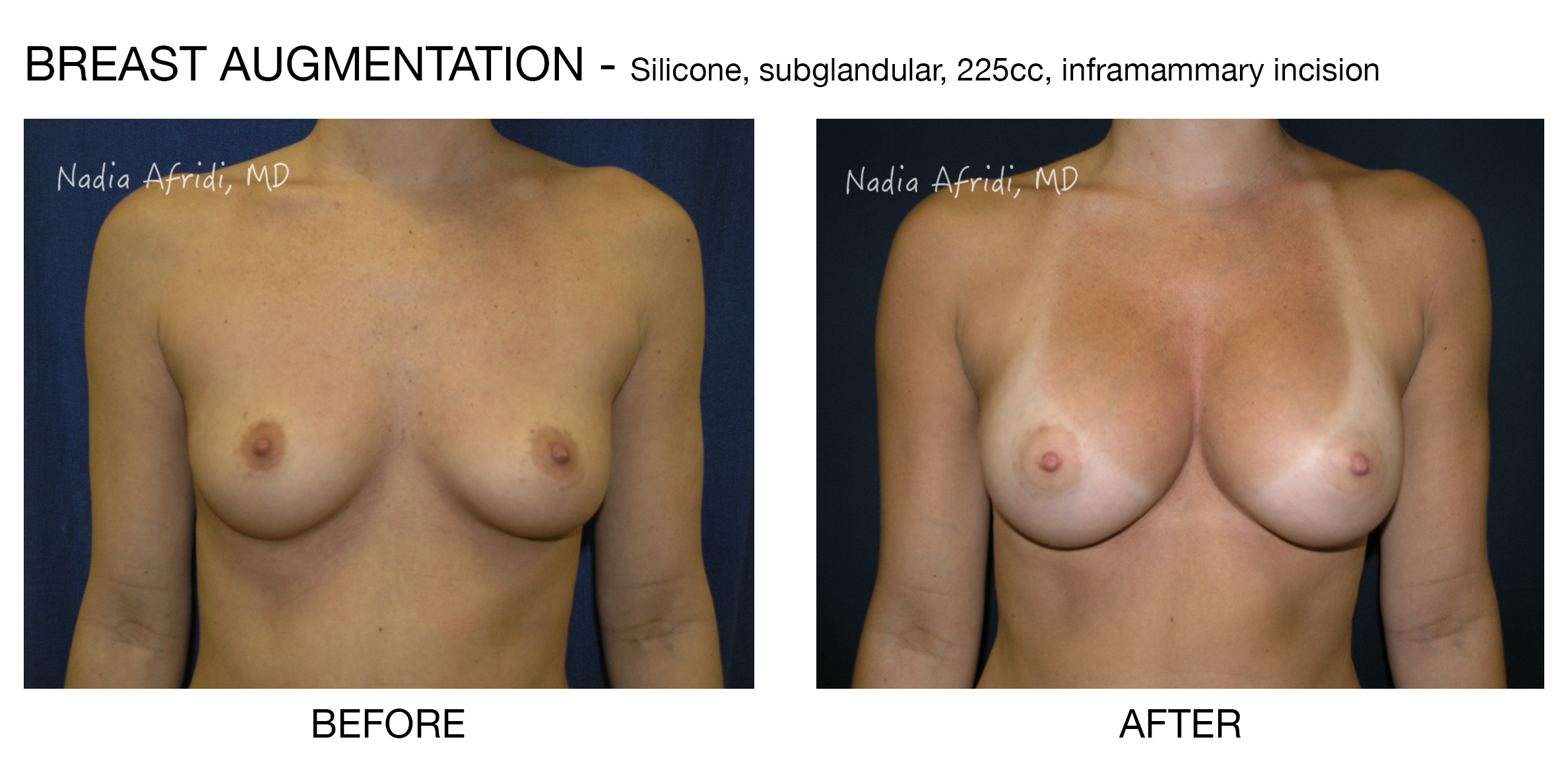
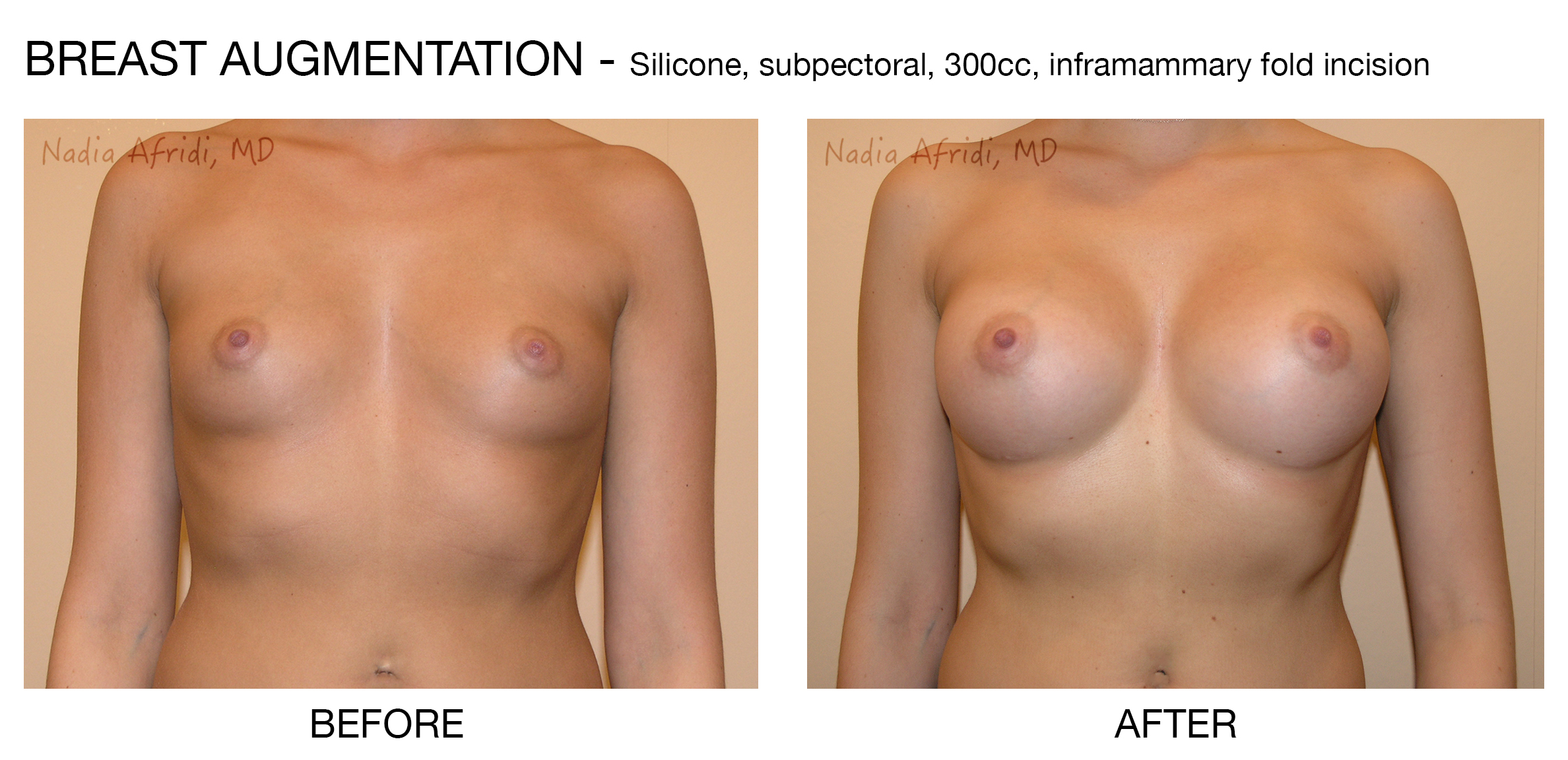
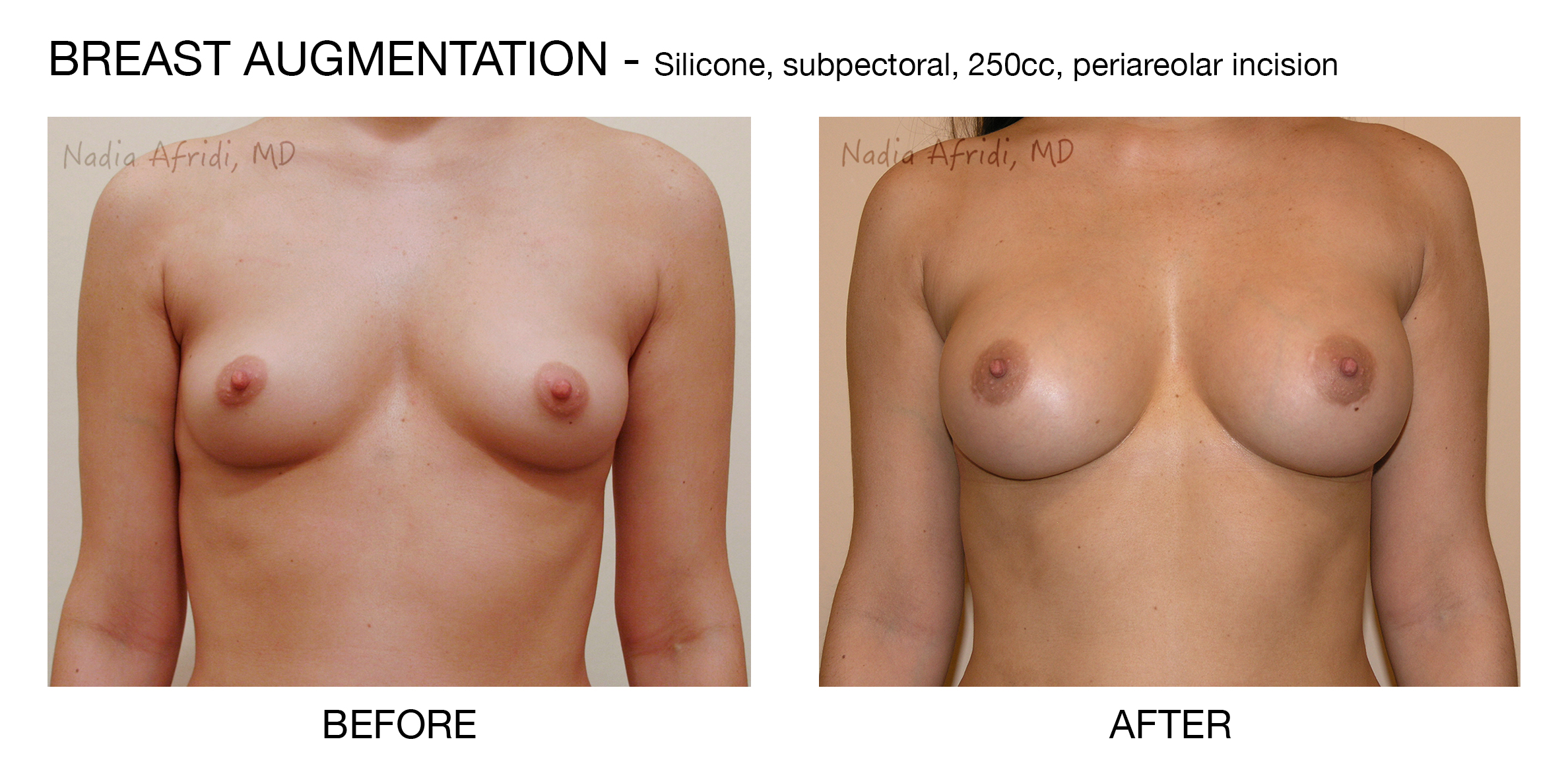
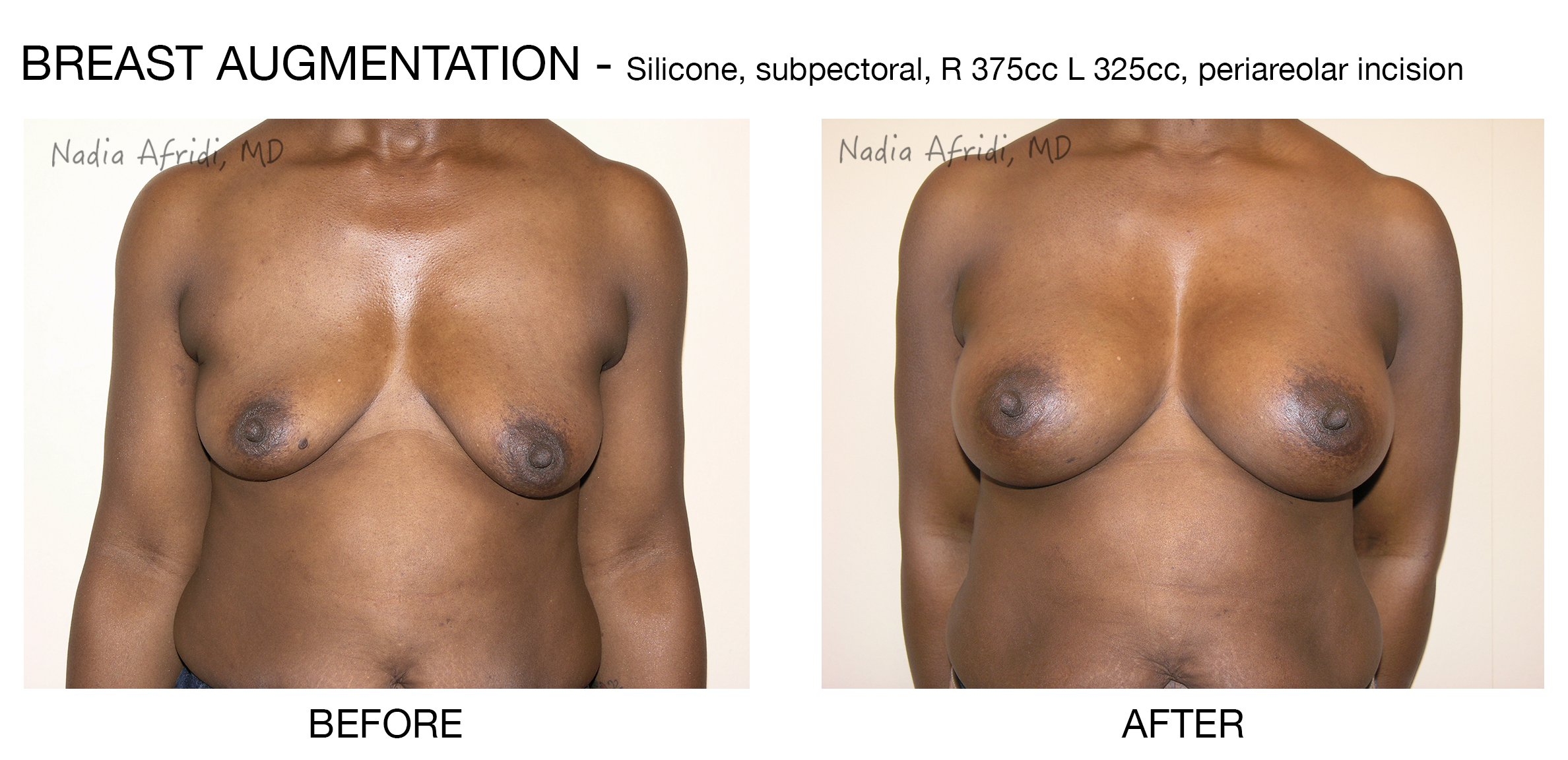
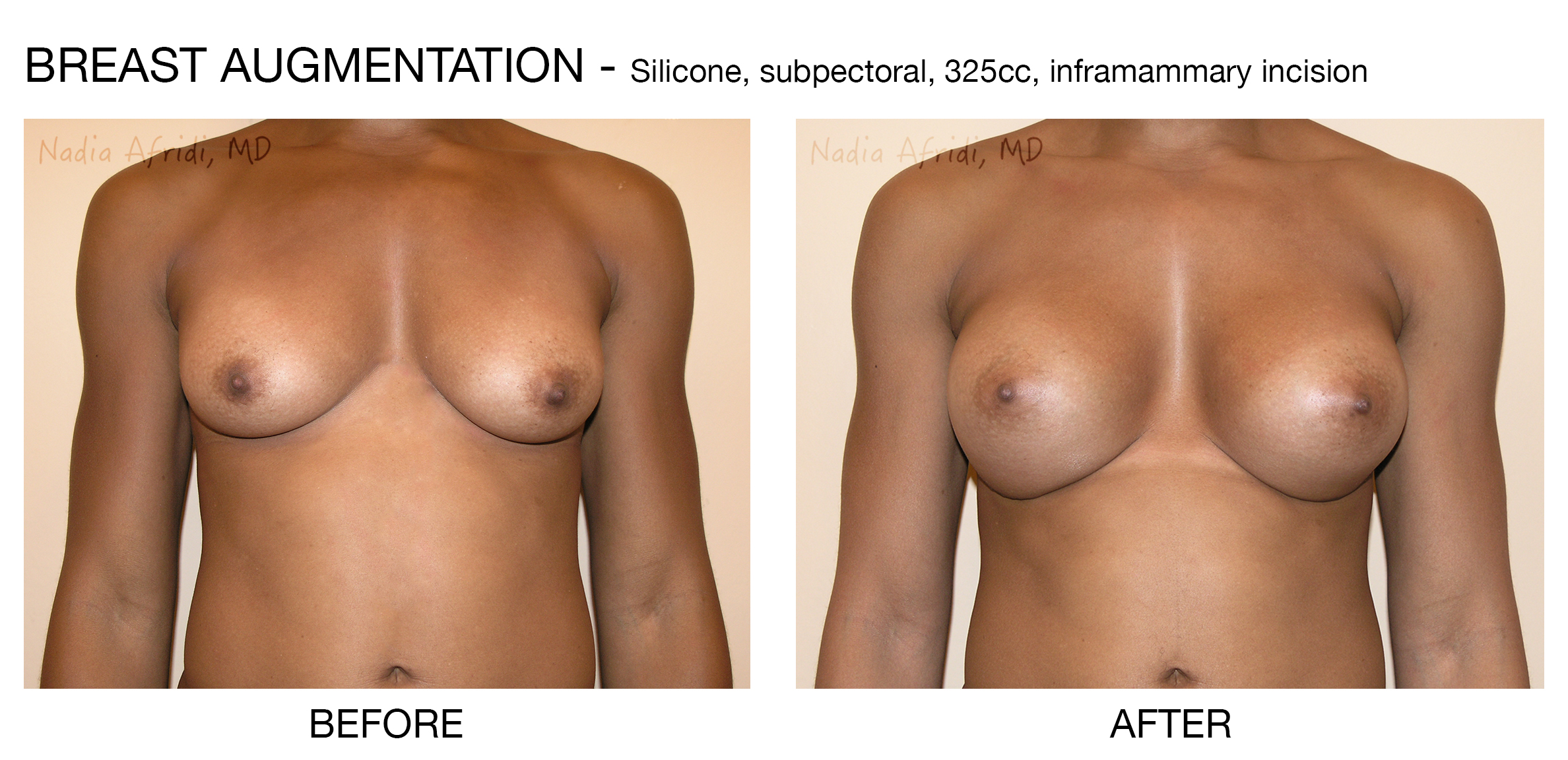
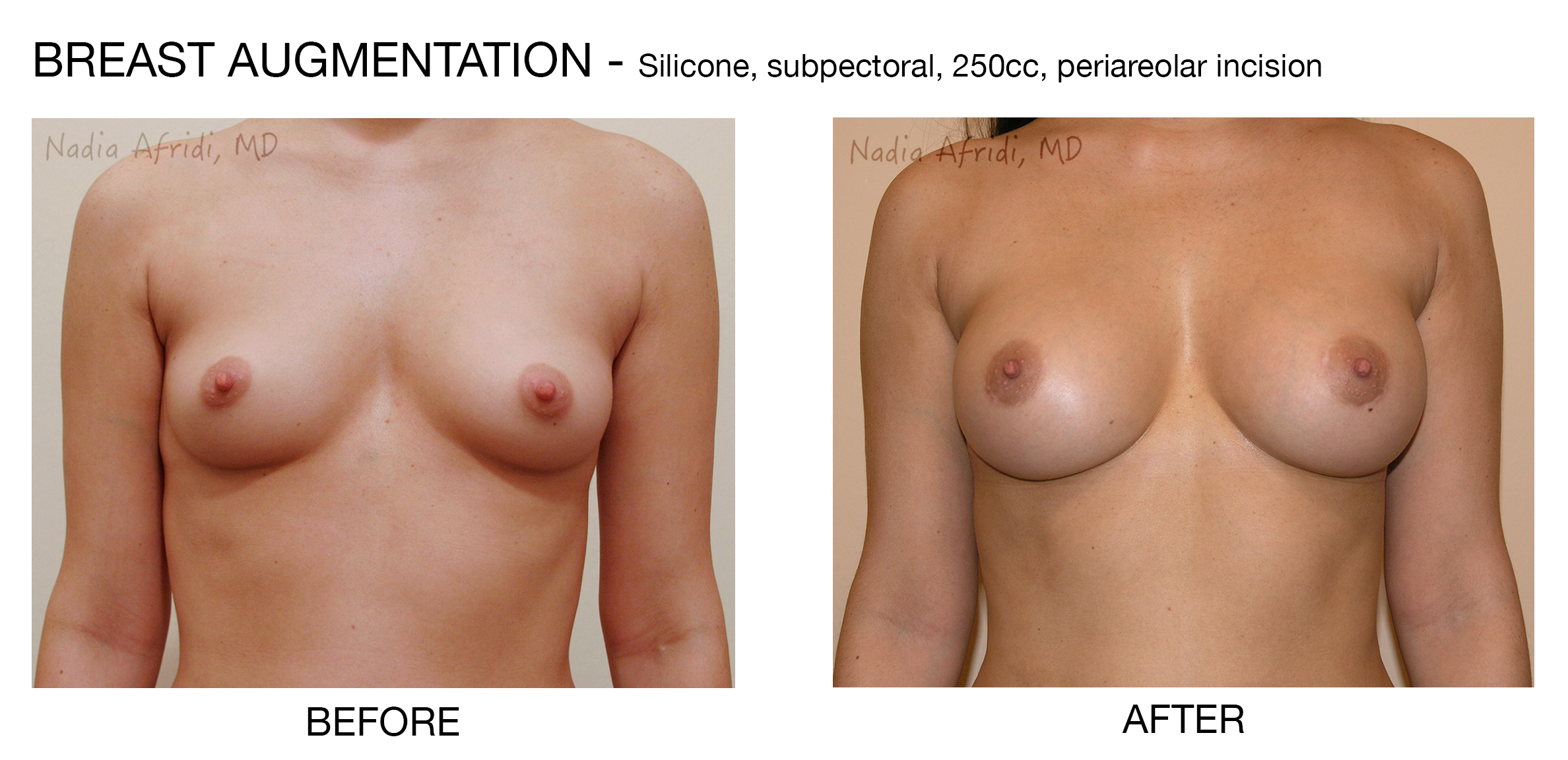
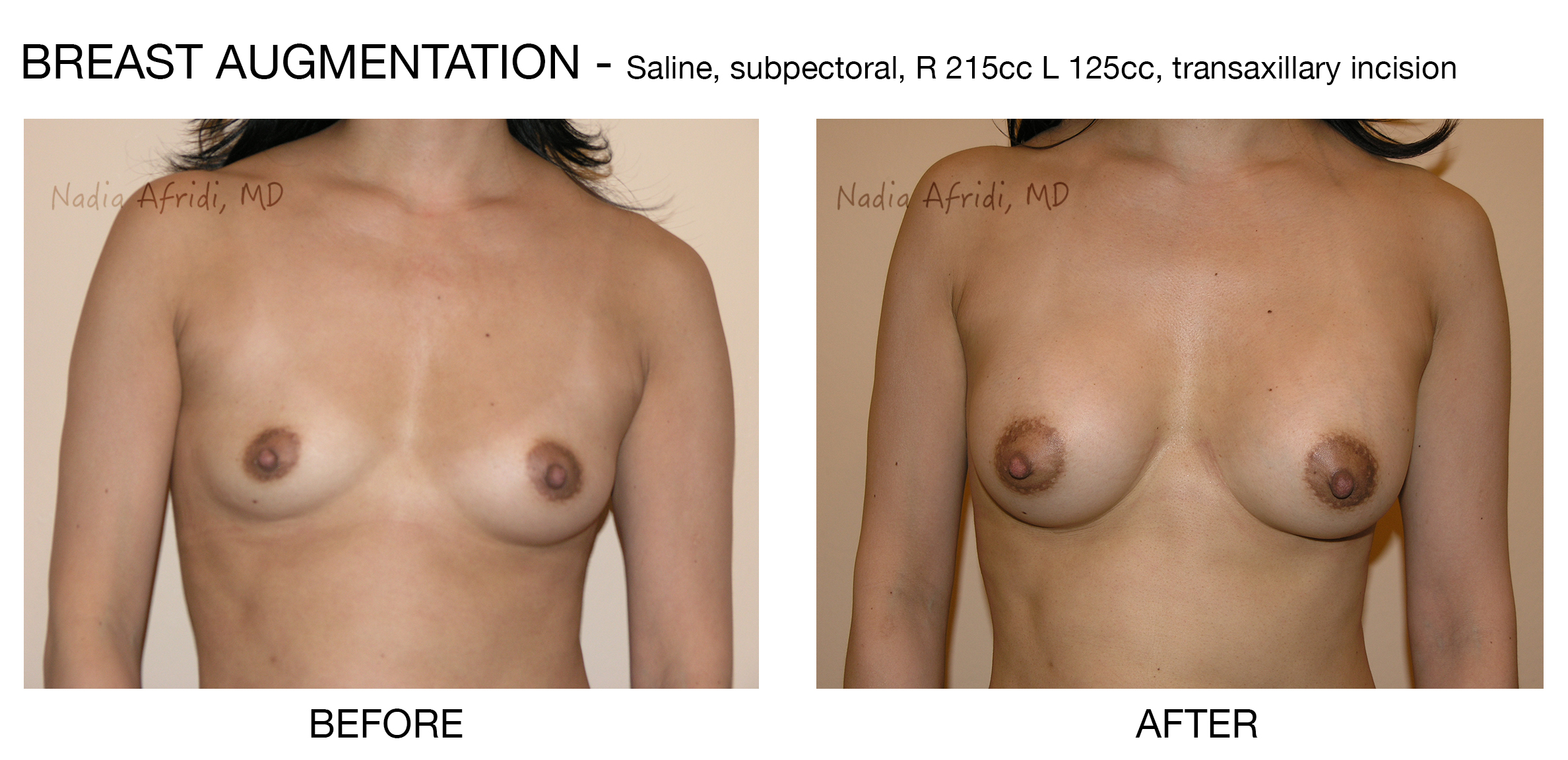
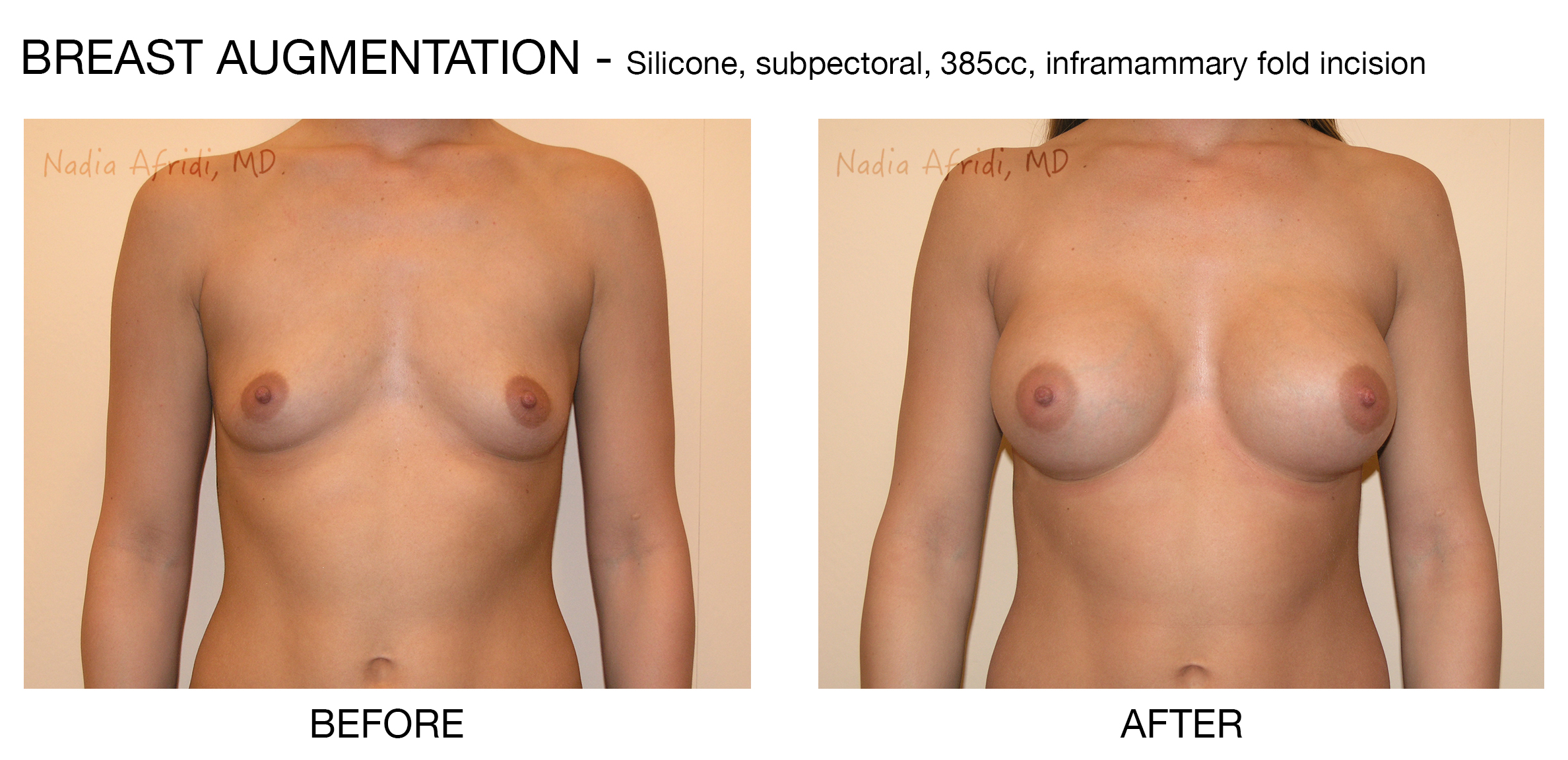
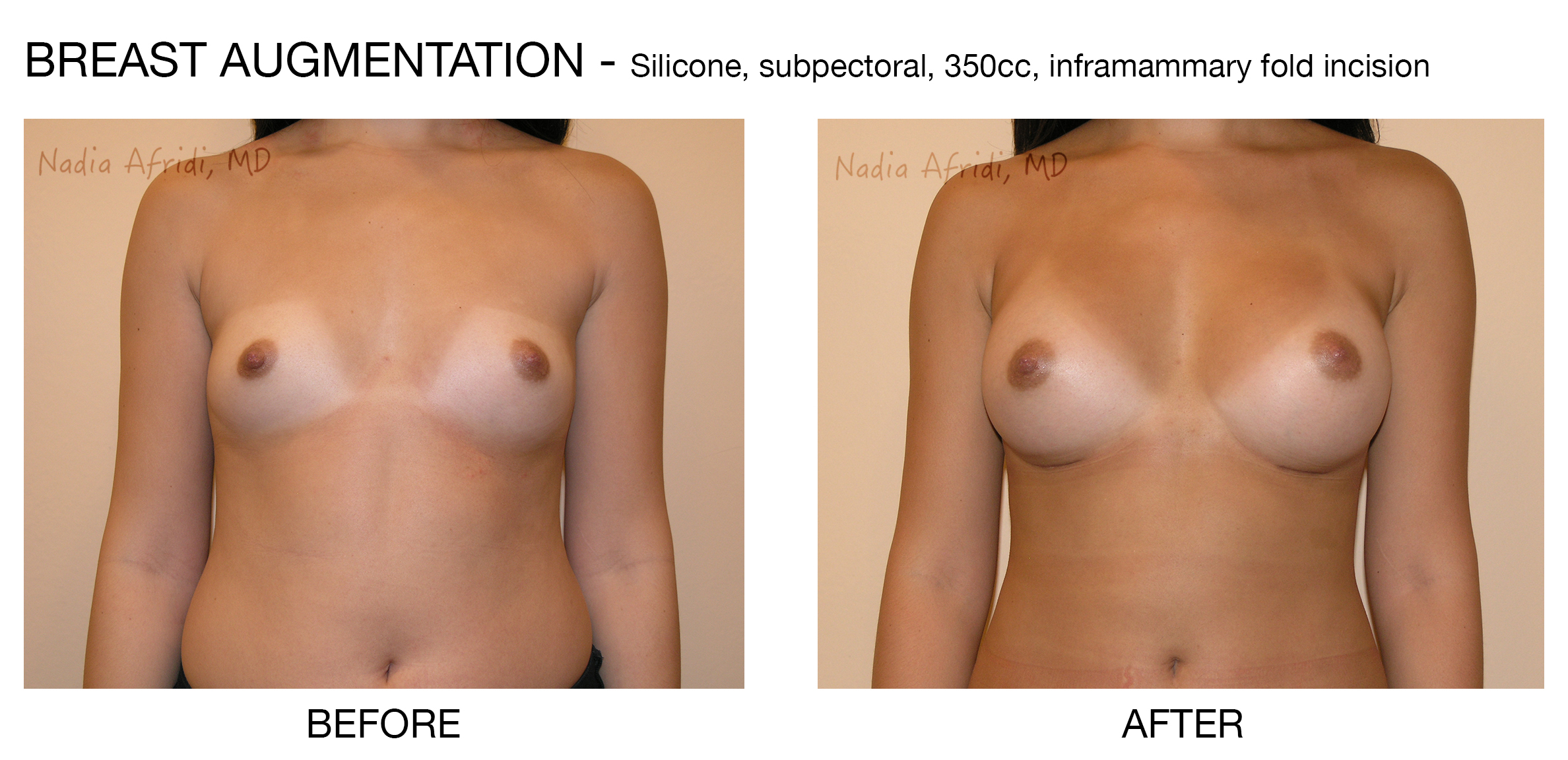

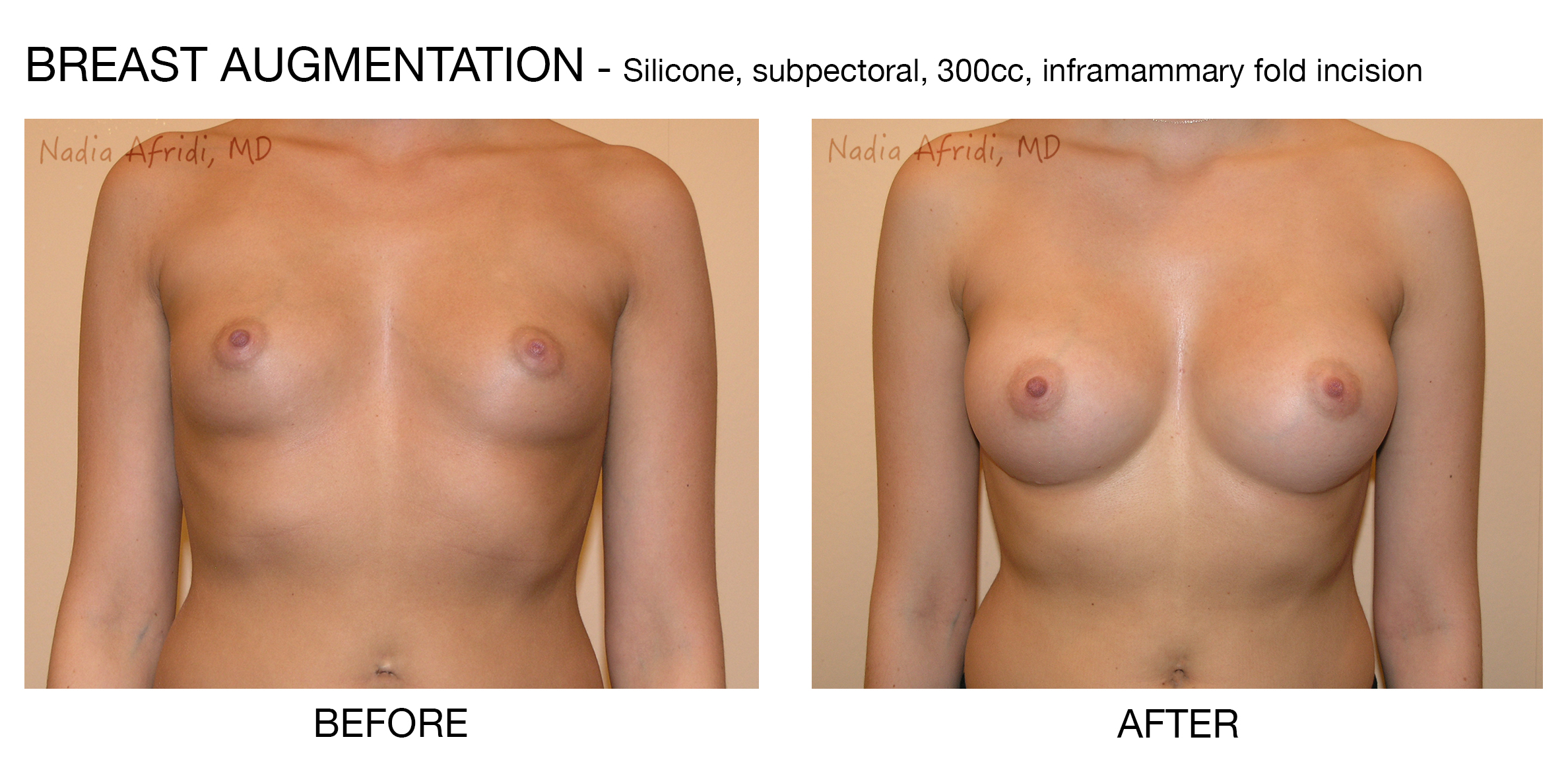
Breast augmentation is one of the most frequently performed cosmetic surgery procedures in the U.S. and one of our most popular services in Dr. Afridi's Manhattan office. Breast augmentation can give women with small or unevenly sized breasts a fuller, firmer, better-proportioned look through the placement of saline or silicone implants in the breast.
Dr. Afridi's patients elect to undergo breast augmentation for many different medical and aesthetic reasons, including balancing breast size, compensating for reduced breast mass after pregnancy or surgery, and correcting a congenital breast defect. Under Dr. Afridi's expert care, patients enjoy great-looking, natural-feeling breasts that are one or more cup sizes larger after the operation.
Fully Customized Breast Enhancement
When you meet with Dr. Afridi for a breast augmentation consult in her New York City office, she will discuss the options and alternatives in great detail, providing you with all the information you need to make an informed decision that will satisfy your needs and expectations. Dr. Afridi offers all patients who qualify for breast augmentation the opportunity to "try on the look" during the initial consultation in order to help select the implant size that's right for them.
Complementary Procedures
Breast augmentation can achieve dramatic and beautiful results on its own as well as in conjunction with other cosmetic surgery or non-invasive procedures. Dr. Afridi sometimes recommends combining breast augmentation with other procedures such as a breast lift for more satisfying results.
Factors to Consider
Dr. Afridi believes there are four major variables to consider when planning breast augmentation surgery:
Site of breast implant placement
Site of the incision
Type of implant
Size of the breast implant
These are primarily dependent on the patient’s preexisting breast shape and size, physical activity level and personal preference.
Breast Implant Placement Options
Implant placement beneath the muscle of the chest offers a few advantages over placement beneath the breast tissue only. These include reduced risk of capsular contracture (post-operative tightening around the implant) and less interference with mammogram examinations. Possible disadvantages include need for drainage tubes and elevated pain in the first few days following surgery. It is also difficult to achieve the same degree of midline cleavage with the implants under the muscle as compared to under the breast. In the case of patients with deflated breasts after pregnancy, implants under the muscle will not achieve the goal of filling the emptied-out breast as well as under the gland. Dr. Afridi will discuss which option may be best for you.
After the implants have been inserted and positioned beneath the nipples, the incisions are stitched closed, then taped and bandaged. In a few days, these bandages may be replaced with a surgical bra.
Breast Augmentation Incision Techniques
The breast augmentation procedure in Dr. Afridi's New York City practice lasts one to two hours and is typically performed with general anesthesia. Incisions are made in inconspicuous places on the breast to minimize scar visibility. These may be located:
In the armpit (transaxillary)
In the crease on the underside of the breast (inframammary)
Around the areola, the dark skin around the nipple (periareolar)
The breast is then lifted, creating a pocket into which the implant is inserted.
Saline and Silicone Gel Breast Implants
Breast implants are silicone shells filled with either saline (salt water) or silicone gel. Both implant types are very safe, and each offers its own advantages. After many years, the U.S. Food and Drug Administration (FDA) has approved silicone breast implants for breast augmentation surgery. Dr. Afridi is proud to offer patients the option of silicone gel-filled or saline breast implants. Each has its individual benefits. While silicone gel implants are much softer and feel more natural, saline implants have the benefit of requiring smaller incisions and can be adjusted during the surgery.
Dr. Afridi has extensive experience with both saline and silicone implants for breast augmentation. In particular, she completed her fellowship in breast surgery with physicians who were study investigators for silicone implants, and she trained in Canada, where silicone breast implants have been in limited use since 1999. Now that silicone implants have been approved in the U.S., Dr. Afridi is fortunate to be among those young plastic surgeons who already has experience in selecting the appropriate implant as well as placing them surgically. She is well-prepared to offer women this safe, soft, natural-feeling implant option.
Dr. Afridi will help you decide which kind of implant is right for you. During surgery, she'll place the implants behind each breast, underneath either breast tissue or the chest wall muscle.
Size of the Breast Implant
The size of the saline or silicone gel implants is as important as their placement, the material they are made of, and the incision technique(s) used to implant them. To help patients envision how their new implants would look and select the size that is right for them, Dr. Afridi encourages patients to "try on the look" during their breast augmentation consultation.
Recovery from Breast Augmentation Surgery
Most patients feel tired and sore after breast augmentation surgery, but this usually passes in a day or two. Many patients return to work within the week.
Stitches are removed in a week to 10 days after breast augmentation. Any post-operative pain, swelling and sensitivity will diminish over the first few weeks.
Scars from breast augmentation incisions will begin to fade in a few months and will continue to fade for months or years.
Complications
Complications following breast augmentation surgery are uncommon and usually minimal. They may include capsular contracture, swelling and pain, infection around the implant, a change in nipple sensation, milk production if you nursed a baby within a year before the procedure, and breakage or leakage of the implant (implant rupture) as a result of injury or the normal compression and movement of your breast.
If a saline implant ruptures, the implant will simply deflate in a few hours and your body will absorb the salt water. If a silicone implant leaks, you will need to see a doctor immediately. Regular monitoring of breast implants after breast augmentation is recommended to ensure continuing breast and implant health.
Revision Breast Augmentation
Dr. Afridi also performs revision breast augmentation for patients who are not satisfied with the size or shape of their breasts after a previous breast augmentation surgery. Some of the more common breast augmentation complications that Dr. Afridi can correct include:
Wrinkling
Bottoming out (when bigger, heavier implants start to drift downwards and the nipples point up)
Implant palpability
Symmastia (formation of a single breast when the implants drift together, causing the skin to separate from the breastbone)
Severe implant displacement
Capsular contracture, distorting the breast shape and feel